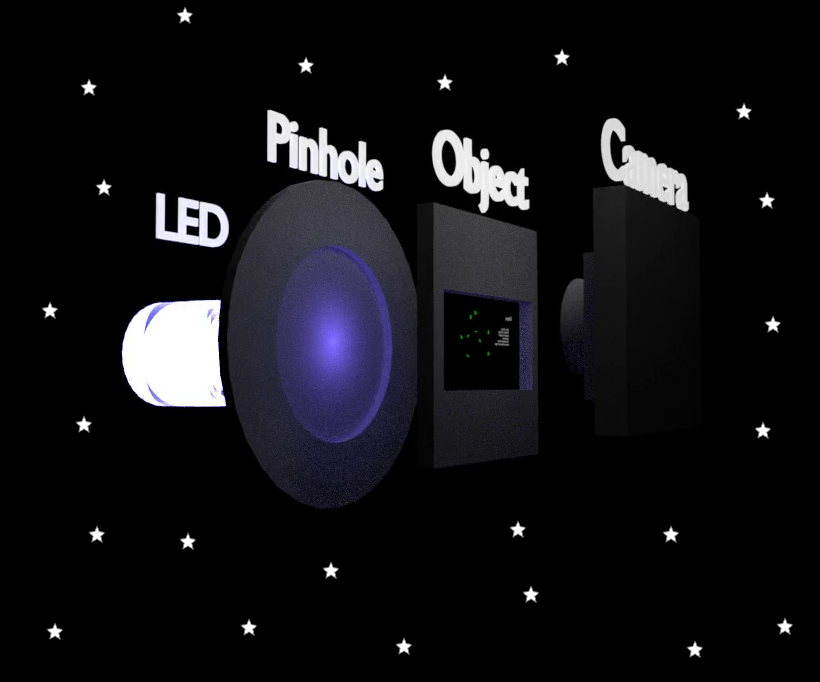Msusenburger (Talk | contribs) |
|||
| (7 intermediate revisions by 4 users not shown) | |||
| Line 3: | Line 3: | ||
<style> | <style> | ||
IMG.HoverBorder {border:1em solid #4711; width:50%; } | IMG.HoverBorder {border:1em solid #4711; width:50%; } | ||
| − | IMG.HoverBorder:hover { width:50%; border:1em solid # | + | IMG.HoverBorder:hover { width:50%; border:1em solid #bea;} |
</style> | </style> | ||
<body> | <body> | ||
| Line 61: | Line 61: | ||
<h2>Digital Inline Holography Microscopy and its Benefits for You</h2> | <h2>Digital Inline Holography Microscopy and its Benefits for You</h2> | ||
</header> | </header> | ||
| − | + | ||
<div class="post-it"> | <div class="post-it"> | ||
| − | + | <p> | |
| − | The motivation of building a DIHM comes with the 'digital lens' functionality of the 3D reconstruction algorithm. Compared with digital holographic microscopy, 3D imaging using classical optics setup is also possible. However, the practice of mechanically recording wavefronts at slightly different distances near the object for 3D imaging would significantly raise up the setup complexity, let alone the high expenses on optical lenses. On the other hand, DIHM uses reconstruction | + | The motivation of building a DIHM comes with the 'digital lens' functionality of the 3D reconstruction algorithm. Compared with digital holographic microscopy, 3D imaging using classical optics setup is also possible. However, the practice of mechanically recording wavefronts at slightly different distances near the object for 3D imaging would significantly raise up the setup complexity, let alone the high expenses on optical lenses. On the other hand, DIHM uses reconstruction algorithms as a virtual digital lens, to reconstruct the wavefront holograms at various distances, thus offering a cost efficient solution with a much simpler setup, enabling micrometer resolution with 3D imaging.</p> |
</div> | </div> | ||
<br> | <br> | ||
| Line 75: | Line 75: | ||
</div> | </div> | ||
</section> | </section> | ||
| + | <section id="Team"> | ||
| + | <div class="container"> | ||
| + | <center> | ||
| + | <img src="https://static.igem.org/mediawiki/2017/8/84/T--TU_Darmstadt--technics.jpg" alt="The beautfiul team behind the technics!" style="width: 100%; max-width: 1600px"> | ||
| + | <figcaption>From left to right: Werner Kleindienst, Michelle Zöller, Markus Susenburger, Zinan Liu, Max von Witzleben</figcaption> | ||
| + | </center> | ||
| + | </div> | ||
| + | </section> | ||
<!-- Footer --> | <!-- Footer --> | ||
| − | + | </body> | |
| − | + | </html> | |
| − | + | {{TU_Darmstadt/footerG}} | |
| − | + | <html> | |
| − | + | <body> | |
| − | + | ||
| − | + | ||
| − | + | ||
</div> | </div> | ||
</body> | </body> | ||
</html> | </html> | ||
Latest revision as of 16:21, 1 November 2017

ChiTUcare
Digital Inline Holography Microscopy and its Benefits for You
The motivation of building a DIHM comes with the 'digital lens' functionality of the 3D reconstruction algorithm. Compared with digital holographic microscopy, 3D imaging using classical optics setup is also possible. However, the practice of mechanically recording wavefronts at slightly different distances near the object for 3D imaging would significantly raise up the setup complexity, let alone the high expenses on optical lenses. On the other hand, DIHM uses reconstruction algorithms as a virtual digital lens, to reconstruct the wavefront holograms at various distances, thus offering a cost efficient solution with a much simpler setup, enabling micrometer resolution with 3D imaging.







